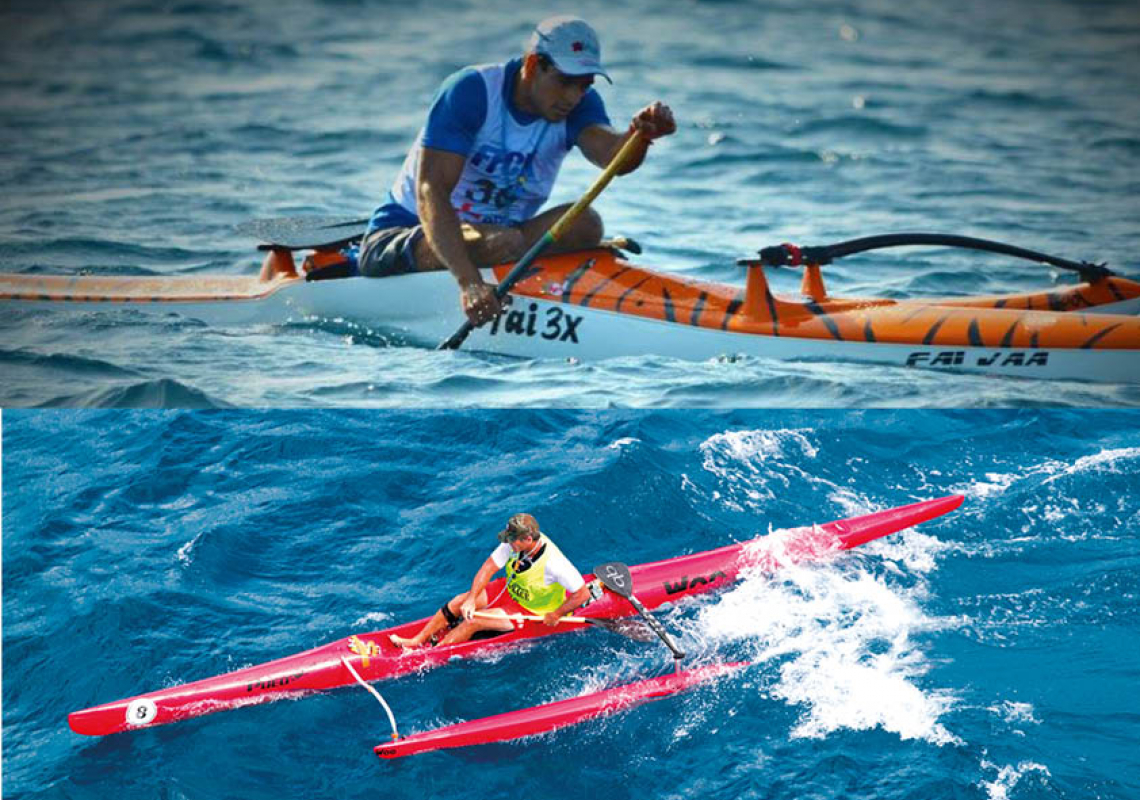OC an adaptation of the Va'a for Hawaiian conditions
We find outrigger canoes all over the world. It is doubtless the oldest ways of the humanity. Man had not domesticated horse yet where he already moved by means of these boats constructed in tree trunks. Contrary to the Senegalese outrigger canoes, to the Guyanese outrigger canoes or to the outrigger canoes of the Indians of the West Indian bow, the Polynesian outrigger canoes are a family part of outrigger canoes as well as the Balinese outrigger canoes. The Polynesian outrigger canoes have only an outrigger placed systematically to the left (with the exception of outrigger 4 Hawaiian places of surfing the outrigger of which is placed on one side or of other according to wave to be surfed). We distinguish mainly two types of Polynesian outrigger canoes1/The "Tahitian" outrigger canoe.
2/The "Hawaiian" outrigger canoe.
Their difference is mainly understandable by the geography of the concerned archipelagoes.
1/The "Tahitian" outrigger canoe or Va'a Hoe
Va'a is an outrigger canoe designed first of all to evolve in lagoons, on flat and shallow plans of water. One Va'a Hoe one place (V1) is long, more than 7 meters, its hull is tightened to go as quickly as possible on the dish and do not possess rudder. The rower sits IN his outrigger canoe. He trots AND goes with the help of his paddle (Hoe). Fai 3X by WOO
Fai 3X by WOO
2/The "Hawaiian" outrigger canoe
It is designed to evolve on the Ocean. The Hawaiian Islands are indeed not surrounded with lagoons and have to undergo the big swells of the Pacific Ocean. Thus the outrigger canoe has to face "complicated" sea conditions. Thus an outrigger canoe one place (OC1) is shorter (approximately 6,30 m) and its hull is hammered so as to being able to surf the oceanic swells in the down wind. The rower sits ON his outrigger canoe (seat on top) not so as to have to take the rap in case of reversal and has a rudder, activated by a feet’s rudder, which allows him to follow the swell of wind in the surfing THE OC1 not being a traditional outrigger canoe in Hawaii but a western adaptation (see article birth of the practice of the OC1 in Hawaii), she freed itself from the tradition to become the most practical possible to be gone up and to be defused: the arms of connection (Iatos) are aluminum and "clippables" in sheaths situated on the outrigger(AMA) and on the canoe. An OC1 is so very practical to implement unlike V1. Picture by Pierre Frechou
Picture by Pierre Frechou





0 Commentaire(s)
Laissez nous un avis sur l'article